Develop a model to describe that matter is made of particles too small to be seen.

Sensors connected to the Piper Computer Kit provide students with educational hands-on experience that integrates environmental sensory data with unparalleled coding and story adventures.
The Sensor Explorer projects and lessons feature three sensors that you wire up to the Piper Computer. Students will then be guided through character-driven story narratives while using game-like StoryMode to learn how decisions impact final outcomes within three unique StoryMode world puzzles and problems. Coupled with the game experience in StoryMode, students will have fun extending their coding skills using PiperCode while collecting real-world data using the 3 sensors.
This lesson will engage students' prior knowledge about connections between wavelength, frequency, and electromagnetic waves. They will form groups to explore the various types of waves and report findings related to frequency and wavelength of their waveform. Using a master drawing of the electromagnetic spectrum, students will explore how human eyes perceive color in the visible light spectrum and how our atmosphere affects waves.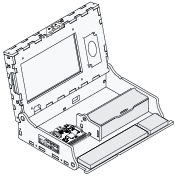 Piper Computer Kit
Piper Computer Kit
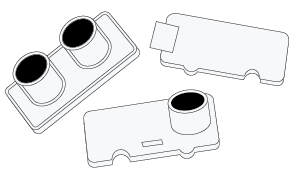 Sensor Explorer Kit
Sensor Explorer Kit
Provide students with a piece of rope and the lesson’s Graphic Organizer. Have students tape the top of the rope to their desks (or have their partner hold a “fixed" end of the rope). They should leave the bottom part of the rope free to move.
Have students make the end of the rope move up and down using a lot of movement. This should create a wave visually. Ask: “What shape are we creating? Draw your shape on your graphic organizer and describe what you see.”
Ask students to do the same thing, but with less movement. Ask: “Draw the new shape you created. How is this shape different from the one you created with a lot of movement?”
Finally, have them repeat with the least possible movement. Ask: “Draw this new shape on your graphic organizer. How is this shape different from the first two? What do you think this means?”
Have students read the following or explain this to students:
"When we moved the rope up and down, we created a wave. This means that energy is being transferred to the rope. Waves, like matter, have properties that help us predict behavior. The properties we will focus on today are wavelength and frequency."
Use slides 2-4 in the slide deck to introduce wavelength and frequency. Students will be labeling their drawings of the 3 waves on their graphic organizers.
Jigsaw: Put students in groups of 4. Each group will become an expert on a type of wave: radio, microwaves, infrared, and ultraviolet. Assign each expert group a specific wave and provide them with the guiding questions and criteria below. In the end, they should be prepared to present on their assigned wave.
Guiding Questions:Once the expert groups have completed their research, reorganize students into share groups, ensuring each share group has at least one member from each expert group. Each member of the share group will then present what they learned from their expert group to the share group.
Have students record notes from the expert and share group discussions on this graphic organizer.
Have students use the drawings they created in their expert groups to create a master drawing of the electromagnetic spectrum. Encourage them not to look it up! Have them collaborate together to create a complete drawing. Slide 5 includes a complete diagram.
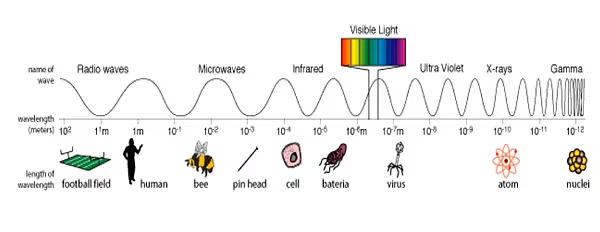
Using slides 6-9, review what students discovered about each type of wave. Slides 10-11 introduce the visible light spectrum.
Note: Students will explore how human eyes perceive color to dive deeper into the visible spectrum part of the EM spectrum during the StoryMode exploration in Lesson 2.
Have students read the following or explain it to them: (also found on slide 12)
“Consider the types of waves we explored. How do you think our atmosphere affects waves? The Earth's atmosphere stops most types of electromagnetic radiation from space from reaching Earth's surface. This illustration shows how far into the atmosphere different parts of the EM spectrum can go before being absorbed. Only portions of radio and visible light reach the surface. Astronomers can observe some infrared wavelengths by putting telescopes on mountain tops.”
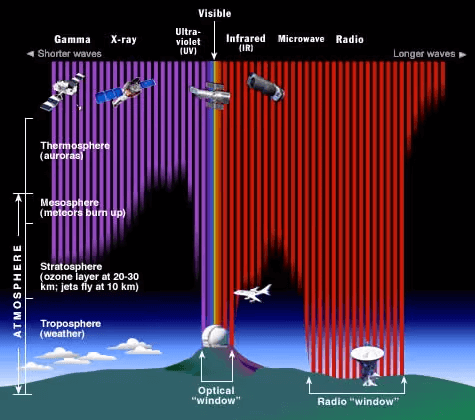
[Optional]: students can read the last section (titled: “Why do we put telescopes in orbit?”) in this article and write a reflection in their journals.
Use the assessment on the different types of waves: Assessment
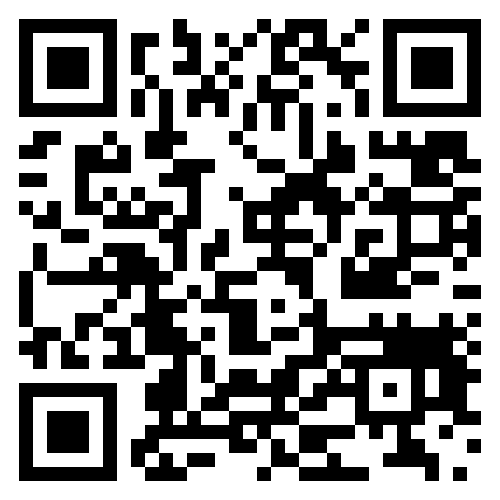 Graphic Designer: Salary $58,910/yr
Graphic Designer: Salary $58,910/yr
 Video Game Designer: Salary $83,240/yr
Video Game Designer: Salary $83,240/yr
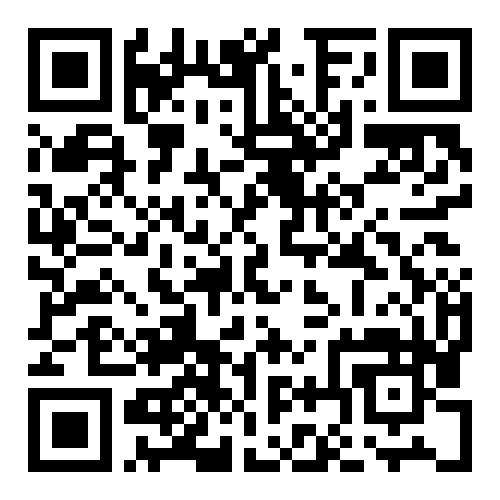 Web Developer: Salary $84,960/yr
Web Developer: Salary $84,960/yr
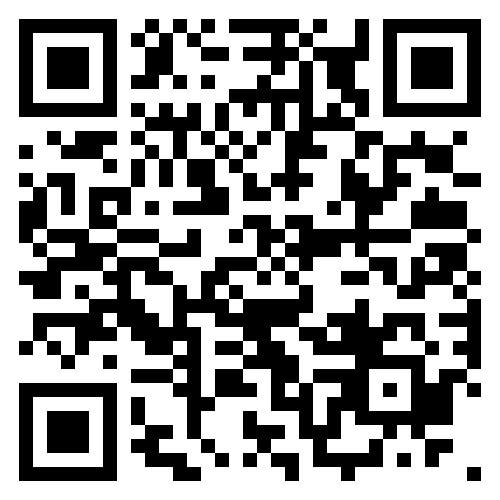 Advertising Executive: Salary $131,870/yr
Advertising Executive: Salary $131,870/yr
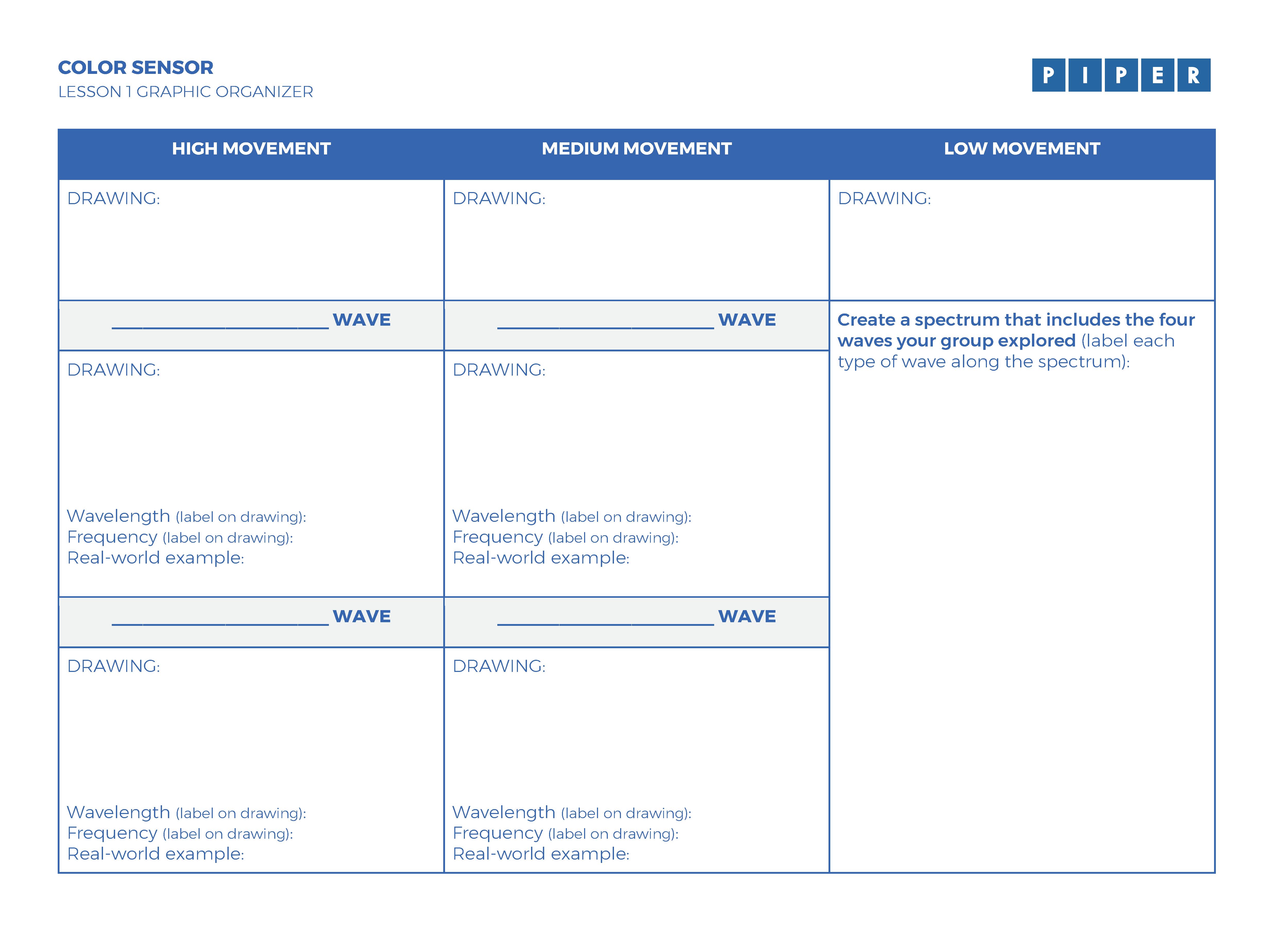 DOWNLOAD
DOWNLOAD
Wavelength The distance between one peak of a wave and the next peak. It’s important because it affects how different types of waves, like radio waves, microwaves, or light waves, travel and how they interact with objects.
Frequency How many waves pass a point in one second. It’s like counting how many peaks of a wave move by in a specific amount of time. Higher frequency means more waves are passing by each second, which can make the waves carry more information, while lower frequency means fewer waves are passing by each second.
Electromagnetism The interaction between electricity and magnetism. It’s the principle that electric currents create magnetic fields, and magnets can affect electric currents.
We are excited to be aligned with the following standards.
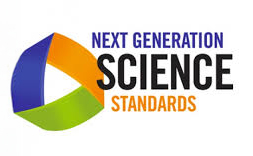
| Concept | Standard |
|
Develop a model to describe that matter is made of particles too small to be seen. |
3-5-PS1-1 |
|
Make observations and/or measurements of an object’s motion to provide evidence that a pattern can be used to predict future motion. |
3-PS2-2 |
|
Develop a model of waves to describe patterns in terms of amplitude and wavelength and that waves can cause objects to move. |
4-PS4-1 |
|
Develop a model to describe that light reflecting from objects and entering the eye allows objects to be seen. |
4-PS4-2 |
|
Generate and compare multiple solutions that use patterns to transfer information. |
4-PS4-3 |
|
Use a model to describe that animals receive different types of information through their senses, process the information in their brain, and respond to the information in different ways. |
4-LS1-2 |
|
Develop a model to describe the cycling of matter and flow of energy among living and nonliving parts of an ecosystem. |
MS-LS2-3 |
|
Develop a model that predicts and describes changes in particle motion, temperature, and state of a pure substance when thermal energy is added or removed. |
MS-PS1-4 |
|
Plan an investigation to determine the relationships among the energy transferred, the type of matter, the mass, and the change in the average kinetic energy of the particles as measured by the temperature of the sample. |
MS-PS3-4 |
|
Construct, use, and present arguments to support the claim that when the kinetic energy of an object changes, energy is transferred to or from the object. |
MS-PS3-5 |
|
Develop a model to describe that waves are reflected, absorbed, or transmitted through various materials. |
MS-PS4-2 |
|
Develop a model to describe the cycling of water through Earth's systems driven by energy from the sun and the force of gravity. |
MS-ESS2-4 |
|
Ask questions to clarify evidence of the factors that have caused the rise in global temperatures over the past century. |
MS-ESS3-5 |
|
Obtain and combine information to describe climates in different regions of the world. |
3-ESS2-2 |